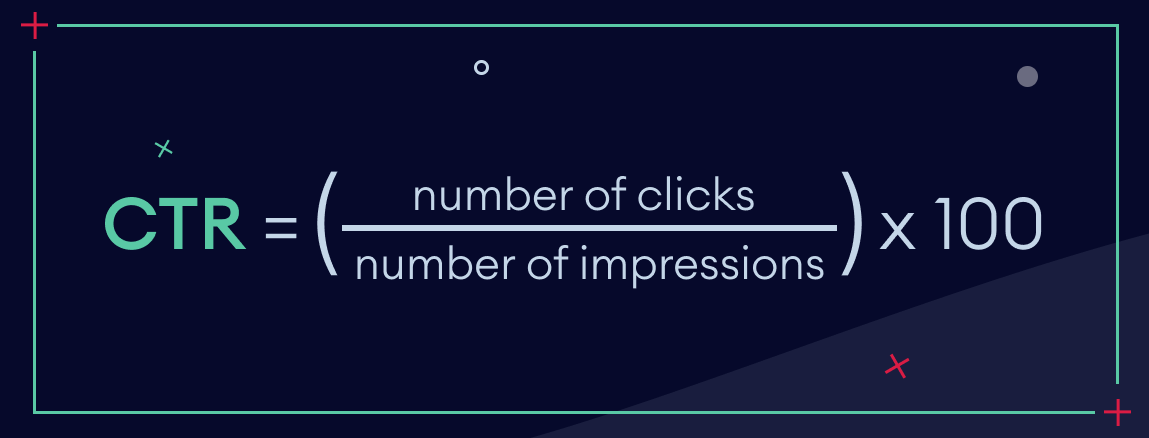
SEO, although composed solely of three letters, is a complex of many different terms and processes that aim at enhancing digital content’s visibility throughout the World Wide Web. How big is it? Well, huge enough for us to prepare a series of articles explaining 100 SEO terms for beginners, experts, and basically anyone publishing content online! We decided to dive into this subject by listing all the most important SEO-related concepts in the form of a glossary. Through this series, we will ensure that you, as a publisher, can navigate the SEO landscape with more confidence than ever before. Let’s start with the first part of our SEO glossary, covering positions from A to G!

SEO, easy explanation
Search Engine Optimization (SEO) refers to the strategy of enhancing a website’s presence on search engines such as Bing, Yahoo, and, of course, the biggest of them – Google. There are three main types of SEO:
- on-page SEO, which includes processes of optimizing elements on a website,
- off-page SEO, which are activities done outside your website,
- technical SEO, which revolves around improving the website’s technical aspects.
The central objective of SEO is to increase a website’s ranking on Search Engine Results Pages (SERPs), thereby attracting more organic (unpaid) traffic. To make your digital content visible to internet users, improve all the ranking-related metrics, and enhance your chances for profitable and smooth website monetization. Let’s jump in!
Learn the SEO ABCs

- ATF (Above the Fold), as opposed to BTF (Below the Fold), refers to an area on a webpage that is visible to users without the need to scroll down. Google used to give preference to ATF content, but now it’s no longer the case, as search ranking factors are much more developed and precise. However, publishers should recognize and perfect above-the-fold sections, as they are the first thing that encourages the user to explore your website further. If you are monetizing your online content with ads, you should know that advertisements incorporated at the top of a page have a higher chance of obtaining great ad viewability;
- Alt text offers a detailed explanation of an image that assists search engines in interpreting its content but is also helpful when the image cannot be loaded for some reason. In such a scenario, the user will view the alternative text to grasp what’s unavailable. Additionally, alt texts significantly improve website accessibility – screen readers present these descriptions to visually impaired users;
- AMP (Accelerated Mobile Pages) is an open-source HTML framework, a set of pre-written code that offers a standardized structure, design, and functionality for creating websites. It helps to make webpages that load fast and are well-optimized;
- Anchor text is the visible, clickable text that “hides” hyperlinks and, after clicking, sends a user to another webpage. It should be visibly different from the content around it and can be used to incorporate internal or external links (more on that under “External link”) into your SEO strategy. Importantly, it’s not always a bad idea to use “naked” anchor text, meaning ones that use the URL itself, for instance, in link lists. However, more often, it’s better to provide more information about what your audience can find after clinking specific link-texts.

- Backlink is a factor that can influence search engine ranking results – it’s a link from one website to another, seen by search engines as a signal of trust and authority. Earning high-quality backlinks can lead to increased website traffic;
- Black-hat SEO includes tactics that go against the rules set by search engines. An example of such behavior is keyword stuffing (you can learn more about that in the third part of the glossary), which involves constantly repeating the same exact keywords in the text. In opposition, white-hat SEO aims to counteract such tactics by fostering quality traffic and endorsing credible websites;
- Bounce rate is a metric that shows the percentage of visitors who leave a site after seeing only one page. A high bounce rate is not always a bad thing since some pages are meant to be abandoned after some time, for instance, a page with a contact form – in this case, a user, after sending a message or getting your phone number, has completed the desired journey;
- Breadcrumbs are a series of clickable links that, when implemented on a website, should serve as secondary navigation and indicate a user’s journey to a page he is currently viewing. They don’t only benefit the user but also help search engines understand your site’s content structure and hierarchy.

- Cache is a technology that helps display preloaded content to users more quickly without the need to access the server repeatedly. Utilizing cache is one of the keys to improving Google Core Web Vitals (more about that below), especially the LCP metric, which measures the speed at which your webpage content loads;
- Canonical URL is Google’s preferred URL for a webpage in case duplicates exist. It’s essential for SEO because Google only indexes canonical URLs;
- CTR (Click-Through Rate) is a percentage that indicates how successful a specific ad was. The formula for CTR is as follows:

- CMS (Content Management System) is a software application or platform designed to assist in creating, editing, and managing digital content. Among the most popular CMSs are WordPress, Blogger, Wix, Squarespace, or Joomla. When selecting a CMS, publishers should also take into account its SEO-friendliness;
- Computer-generated content refers to content that is produced by software with minimal human effort. Nowadays, many sites use AI-generated content, and there are many AI tools available to support publishers. However, site owners should remember about proofreading and fact-checking since even though Google is not against things generated by artificial intelligence as per se, but it does not appreciate low-quality content;
- CRO (Conversion Rate Optimization) aims to increase the number of users taking a desired action on a page. Importantly, this term isn’t only used to describe growing sales numbers but many other actions like signing up for an event or mailing list, filling out a form, or downloading a report;
- CWV (Core Web Vitals) serve as indicators of webpage experience quality. Launched by Google in 2020, they are now part of Google’s “page experience” ranking signals (it means that the company ranking system uses CWV). That’s the reason why publishers should monitor the Largest Contentful Paint (LCP), Cumulative Layout Shift (CLS), and Interaction to Next Paint (INP) and improve these metrics when the need arises;
- Crawling is the first step in the process of positioning and displaying pages in search engines. Crawlers (spiders, automated “programs”) find, scan, and download website content. The next step is indexing (more on that in the following article).

- DA (Domain Authority) is a metric that indicates how likely a website will rank well on search engines. Websites with higher DA scores show up more often in the top search results;
- Direct traffic refers to the website traffic caused by users who type the website’s address directly into their browser or access it through a saved bookmark. These users bypass other channels, such as social media or ads, to go straight to the website;
- Domain (also known as domain name, internet domain, or web domain) is the same as the address of a residential building – it’s a string of characters that help to identify the property. This allows browsers and users to navigate directly to the site;
- Duplicate content can harm SEO by confusing search engines, making it difficult for them to decide which version of the content to display in search rankings;
- Dwell time is a search engine ranking factor, a metric that shows the time users spend on a certain website. It reflects how well it fulfills users’ needs. Search engines don’t reveal such information, but there are several ways in which you can increase dwell time, which include working on the UX of your corner of the web, using the right keywords, or creating your content with the right search intent (goal or purpose of someone seeking information or solutions online, more on that in the last part of the glossary).

- E-E-A-T (Experience, Expertise, Authoritativeness, and Trustworthiness, formerly known as E-A-T) is a Google framework aiding in evaluating content quality. It isn’t a direct ranking factor in Google’s algorithm but serves as a guideline for human raters to assess search result quality. Publishers are expected to have the necessary experience and knowledge in their field, while also ensuring that their content is credible, trustworthy, and authoritative. By doing so, they build a sense of professionalism and reliability that enhances their overall online presence;
- Engagement metrics are data and measurements that help to track how users engage with a product or content. These kinds of insights allow companies to modify their marketing tactics or content to increase their appeal. Some typical engagement metrics include session duration, bounce rate, page views, or Click-Through Rate;
- External link is a link leading from your site to another one, which can contribute to your website’s authority and relevance;
- Evergreen content is a content type that continues to be relevant, even if a long time has passed since publication. The benefit of creating such content is that it can drive traffic to your website over an extended period of time. Unlike time-sensitive articles, evergreen posts don’t lose their value quickly. A perfect example of such content is a post like “watercolor painting techniques for beginners”, which offers information that is always relevant to newcomers in that field.

- Featured snippet is an answer to a user query that appears at the top of the results page. It’s beneficial for some publishers, as it’s more likely that the user will go to such a website than to others. It’s impossible to “sign up” a website to be included, as it’s decided externally by dedicated algorithms. Nevertheless, publishers can make it more possible by providing high-quality content and, among others, providing users with informative answers to specific user queries, written in simple language.

- Gateway page (also known as doorway page) is something publishers should steer clear of. Such pages provide minimal to no benefit to users, as they are designed to rank highly on search engines for particular keywords without offering relevant or helpful information. Their function is mainly manipulative, aiming to drive traffic to a site without providing a decent User Experience;
- GA (Google Analytics) is a renowned tool that tracks and reports website traffic and user behavior. The latest version of this solution is called Google Analytics 4;
- Google penalty is a sanction that a website may experience for breaching Google’s guidelines like Publisher Policies and Restrictions. These penalties can lead to a drop in rankings or even total removal of the website from search results;
- Guest Blogging is the practice of welcoming a post author from outside your organization to write a text that will be published on your website. This approach is valuable, especially when the chosen contributor has expertise in a relevant area. Moreover, it is commonly used to acquire backlinks (we explained above) to your site.
This is just the starting point!
There are still many vital terms related to Search Engine Optimization that you should get to know. We didn’t put them all in one article to avoid your finger falling off due to overly intense scrolling! However, don’t let your appetite for knowledge weaken – the second part of our glossary is just around the corner!


